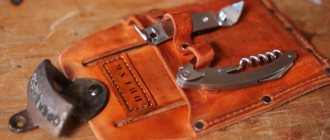We recently wrote about 75 vivid memories that you should definitely give to your child. We would like to continue in the same spirit! After all, we, parents, are already adults, but many still remember the games we played in childhood. And of course we remember who we played with! JOINT GAMES are an incredibly simple way to leave a bright mark on your child’s memories, strengthen motor skills, logic and relationships!
PLAY THESE GAMES WITH YOUR CHILD TO MAKE VIVID MEMORIES OF HIS CHILDHOOD!
- Running with an “egg”. We put a ping pong ball on a teaspoon and run around the entire apartment, trying to keep the ball on the spoon. From 3 years.
- Chatterboxes. Let's talk quickly. Who can do it longer? From 3 years.
- We think quickly. One player quickly names a word. The other person should immediately say what came to his mind in this regard. Then we change roles. From 4 years.
- Veterinary hospital. We put soft toys in bed and treat them: bandage them, give medications, measure the temperature, apply compresses, etc. From 3 years.
- Let's put on makeup. Painting your face in front of the bathroom mirror. From 4 years.
- We give names. We come up with some funny name for each finger. From 2 years.
- Let's keep our balance. With arms extended to the sides, we walk like a tightrope walker along the very edge of the carpet. From 3 years.
- We score goals. We use a string to mark the gate on the carpet. From some distance away, we throw ping-pong balls at the goal. Each hit earns a point. From 3 years.
- We make wishes about people. We look out the window. We come up with various stories about the people we see below. From 4 years.
- Witch game. We lay out a circle from the rope. This is a witch's house, in which one of the players - a witch - lies in wait for prey. The rest are crawling around the witch's house. When the witch comes out, everyone runs away very quickly. From 2 years.
- Ghost game. Everyone wraps themselves in white scarves and circles around the apartment like ghosts, making terrifying sounds. From 4 years.
- Dog game. One player is chosen as a dog. Others lead him on a leash throughout the apartment. From 2 years.
- Game of steps. We climb the stairs step by step. We come up with a name for each new step. From 5 years.
- Magnet game. Place a magnet under the paper and a coin on the paper. Use a magnet to move the coin along the paper. From 4 years.
- Forfeit. We collect forfeits from the players. We ask others: “What should the player who owns this forfeit do?” From 3 years.
- Let's play traffic. Using a thick brush and paints, we draw streets on a large sheet of paper. When the paints are dry, we begin driving the toy car around the roads. From 2 years.
- Let's play ice cream parlor. Fill a yogurt cup with fruit juice, yogurt, etc. and freeze it. Decorate the ice cream and serve. From 3 years.
- We play hide and seek. One is hiding in the apartment, and the others must find him. From 2 years.
- Let's play robbers. We hide several objects in the room. Players returning to the room must find the missing item. From 4 years.
- Toy money. We put the coins under the paper. Using a soft pencil, rub over the coin. We cut out paper money. From 5 years.
- We depict a snake. The more players, the better. We run around the apartment one after another. The guide tells the players what they should do, such as crawl around the table or tumble around the room. From 3 years.
- We are looking for pictures. The participant in the game looks for a picture in an illustrated book. Others must guess it. From 2 years.
- We are looking for a ring. We quietly transfer the ring to the fist of another player. You need to guess in which hand the ring is hidden. From 4 years.
- Blot pictures. Spray ink onto paper. Fold the paper with the blot inward, then unfold it again. Draw a picture from the prints. From 3 years.
- Swing. One lies down on the blanket, the others lift it higher and swing it. From 5 years.
- Skittles. We place the cubes on the carpet like skittles and knock them down with a tennis ball. From 2 years.
- We glue the collage. We tear newspaper or magazine pages into pieces. From this we glue a colored collage. From 3 years.
- A room out of a box. We make a room out of a cardboard shoe box. We draw furniture on paper, cut it out and paste it into the box. From 5 years.
- Beds made from matchboxes. We make cribs from matchboxes, and cut out suitable size pillows and blankets from paper. We draw little people on paper, cut them out and put them in beds. From 5 years.
- Who will blow next? We blow on the bottle caps so that they fly off as far as possible. From 3 years.
- Domino ribbon. We arrange the dominoes one after another into a long ribbon, placing them on a short edge. When the ribbon is ready, push the first domino. All the dominoes fall, overturning one after another. From 2 years.
- We make paper animals. We draw any animals on thick paper. Cut it out. Glue a strip of cardboard as a stand. From 5 years.
- Making a picture book. Cut out pictures from a catalog or magazine. Glue it into a notebook and decorate the cover. From 4 years.
- We make boats. We make boats from walnut shells: we glue triangular sails from paper. We let the boats float in a basin or in a bathtub. We blow on them in different directions. From 2 years.
- Mother and child (father and child). With a reversal of roles: adults play children and vice versa. From 2 years.
- Mosaic. Cut a rectangle out of paper. Then cut it into 10 pieces of different shapes. Mix the pieces. Make a rectangle out of the pieces again. From 5 years.
- Stringing hearts. Cut out hearts from colored paper. We make a hole in each heart and string it on a cord. We hang the chain. From 5 years.
- Let's hum. One of the players begins to hum a melody. Others should recognize her. From 3 years.
- We dress up the dolls. We make outfits for dolls from scraps. From 4 years.
- Outline the hand. We place our hand on the paper. Draw along the outline with a pencil. Cut out and paint with colorful patterns. From 5 years.
Salki
The game "Tag" is designed to develop speed and dexterity.
Location. Hall (platform).
Description of the game. A playing area is determined (for example, one half of a volleyball court). The driver is determined. At the teacher’s command, the driver tries to catch up and touch (smear) all the other players with his hand as quickly as possible. The teacher times the time. After all the players have been named, the driver is told his time (which he remembers) and the next driver is assigned. The game is repeated until all players are the driver. The player whose time is the shortest wins.
Rules.
- The upset player immediately leaves the playing area.
- Players are prohibited from stepping beyond the boundary lines of the playing area. When a player makes a stand, he is considered to have been greased and leaves the game.
Methodical instructions. Depending on the specific objectives of the lesson (development of speed endurance, development of speed, etc.) and the number of students, you can use playing areas of different sizes for the game, and repeat the game several times in a row. In addition, you can vary the method of movement: running, side step, jumping on one leg, etc.
Name your profession
For this competition you need to prepare appropriate pictures in advance. The presenter takes turns showing a certain combination of pictures, and the children guess the profession from these pictures. Whoever guessed it raises their hand and answers, for the correct answer they get a point, and whoever has the most points in the end gets a prize. And examples of pictures can be absolutely anything: brick, concrete mixer and trowel (builder); microphone and stage (singer); stethoscope and white coat (doctor); handcuffs and police cap (policeman); broom and trash can (janitor); scissors and hair (hairdresser); pots and white cap (cook) and so on.
Commemorative drawing
The guys are divided into small teams of about 3-5 people. Each team receives a large sheet of paper and pencils (markers). The presenter shows a bright and colorful drawing to the children for a minute (absolutely any picture that depicts many different objects). Then the presenter closes the drawing and gives the “start” command, according to which the children must reproduce the picture on their piece of paper within a certain time, for example, 5 minutes. The team whose members can display the picture they saw as accurately as possible will win.
Fishermen and fish
The game is suitable for children of primary school and preschool age and promotes the development of dexterity, speed and endurance.
Location. Gym (corridor, games room).
Preparing for the game. A leading player (“fisherman”) is selected and a playing area is outlined (for example, half of a volleyball court). The remaining players are the fish.
Description of the game. As soon as the teacher gives the command, the “fisherman” begins to catch up with any player and tries to touch him (to touch him). As soon as the player is caught, he and the driver form a “fishing net” (they hold hands) and try to catch up with the other players (“fish”), moving as a pair without separating their hands. Having caught up with the next “fish”, they attach it to the “fishing net” and the three of them catch up, holding hands with all three. Thus, as soon as the next player is defeated, there are one fewer “fish”, and the “net” becomes one player longer. You can end the game when all the “fish” are caught, or when only one “fish” remains, which is declared the winner of the game.
Rule. It is prohibited to let go of your hands during the game (break the “net”). If a player is caught when the net is broken, he remains a “fish”.
You can play several times in a row, changing the size of the playing area and the playing time. In accordance with the objectives of the lesson, the coach can change the direction of the game, focusing, for example, on the development of endurance, or on the development of other motor qualities.
Features of development of children 3–6 years old
The child develops at an incredible speed, and every year he becomes interested in something new.
- At 3 years old he wants to do everything himself. This is a time of independence that needs to be respected and cherished, because it allows the child to feel like a young man. Choose games in which the child can do something himself, decide, invent, choose. And the parents’ task is not to interfere if the child wants to act independently, and to help if he asks for help.
- At 4 years old, the baby develops spatial thinking, and his speech already becomes adult. This is the time of labyrinths and puzzles, the simplest board games or games with cards. At this age you need to sculpt, build, fantasize.
- At the age of 5 you can already write books and build big castles. The child develops his own hobbies, and adults should support them and follow them in play.
- At the age of 6, children become familiar with letters, numbers, first reading of syllables, and first examples. But no study - just play! At the same time, it is important that the child does not find it difficult or boring.










